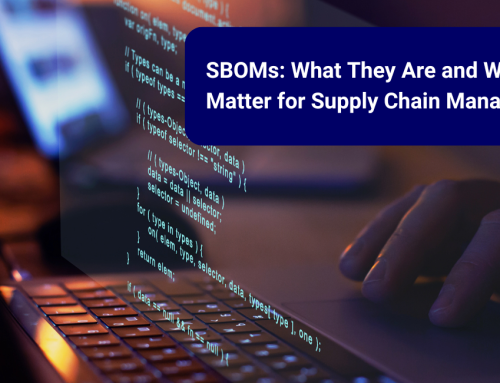Five Months Into CPS 230: What Australian Fintechs Are Really Learning About Third Party Risk, Continuity And The Role Of Software Escrow
Australia’s new operational resilience standard, Prudential Standard CPS 230 Operational Risk Management, has now been in force for five months, with a start date of 1 July 2025 for APRA regulated entities. The standard replaces earlier outsourcing and business continuity rules such as CPS 231 and CPS 232 and is intended to ensure that regulated firms can manage operational risks, maintain critical operations during disruptions and properly oversee their service providers.
Although CPS 230 is addressed to APRA regulated entities like banks, insurers and superannuation funds, its impact is being felt right across the fintech ecosystem. Many fintech and SaaS vendors now sit in the category of “material service provider” for those institutions, particularly when their platforms support payments, lending, onboarding, identity, risk analytics or other activities that could count as critical operations in a disruption scenario. Commentary on the new regime consistently highlights that regulated firms must classify critical operations, set disruption tolerance levels, maintain credible business continuity plans and put in place structured frameworks for managing material service providers and even their “fourth party” dependencies
For fintech vendors, the most visible change in the first few months has been at the procurement and due diligence stage. Firms supplying into APRA regulated clients are reporting noticeably more detailed questionnaires and deeper technical and operational scrutiny. Buyers are asking not only how a platform is built, but how it would behave in severe disruption scenarios: what the incident response process looks like, how quickly services could be restored, what the data extraction and migration paths are, and how the vendor tests its own continuity measures. This aligns with CPS 230’s requirement for regulated entities to have tested business continuity plans, to be able to maintain critical operations within set tolerance levels and to consider disruptions at material service providers as part of their scenario testing.
Another strong theme has been the growing focus on upstream and downstream dependencies. CPS 230 requires regulated entities to understand and manage the risks associated not only with material service providers but also with the “fourth parties” that those providers rely on to deliver critical operations. In practice this means fintechs are being asked more often about their own cloud providers, embedded services, AI model providers, data and analytics partners and other building blocks. For AI enabled platforms in particular, reliance on external models, training pipelines or inference services is now part of the conversation about operational resilience rather than just a technical architecture choice.
At the same time, boards and senior management at APRA regulated entities have become more closely engaged with technology vendor risk. CPS 230 explicitly makes the board ultimately accountable for oversight of operational risk management, business continuity and the management of service provider arrangements, and expects boards to approve business continuity plans, tolerance levels and service provider management policies and to receive regular reporting on material service providers. This governance shift has translated into more board level scrutiny of key fintech relationships, especially where those vendors underpin services that would be difficult to replace quickly.
In its Response to Submissions on the draft guidance accompanying CPS 230, Australian Prudential Regulation Authority explicitly noted that while the Standard is intended to strengthen operational resilience, it also “supports … innovation” by enabling entities to adopt third-party solutions in a proportionate way. In clarifying its expectations, APRA emphasised that smaller or less complex institutions can apply the Standard “in a way that is commensurate with the size, business-mix and complexity of the entity’s operations.”
In other words, the regulator signals it is not aiming to stifle innovation through over-regulation, but rather to ensure that third-party and supply-chain risk is managed in a way that is compatible with evolving fintech and SaaS ecosystems.
Within this context, software escrow and SaaS escrow have reappeared as practical tools that can support CPS 230 aligned resilience objectives. Historically, software escrow was seen as something associated with on premise software and source code held in a vault that might never be used. Under today’s operational resilience expectations, modern software escrow arrangements look quite different. They can be designed to hold not only source code, but also deployment documentation, infrastructure as code templates, database schemas, configuration files, API documentation, cloud subscription credentials and in some cases AI related artefacts such as model weights or configuration that a beneficiary would need in order to restore or replicate a critical service if the vendor became insolvent or otherwise unable to perform. Everything that would be required to manage a failover recovery situation or continue to maintain a critical third-party service if a supplier goes down with appropriate testing to validate the plan.
That matters because CPS 230 is not simply asking for continuity to be documented in a policy. It expects regulated entities to have credible plans to maintain critical operations within specified tolerance levels and to test those plans using severe but plausible scenarios, including the failure of a material service provider. When a fintech vendor agrees to place up to date technical and operational artefacts into software escrow, and those deposits are periodically verified by an independent software escrow provider, the buyer can point to a tangible mechanism that would help support its business continuity plan in a vendor failure scenario. For the fintech, this offers a way to provide assurance without disclosing sensitive intellectual property under normal circumstances.
Software escrow also aligns neatly with CPS 230’s focus on substitution and exit planning in service provider management. The standard requires APRA regulated entities to maintain a comprehensive service provider management policy, to identify material service providers, to manage the risks associated with those providers and their fourth parties, and to ensure they can conduct an orderly exit from a material arrangement if needed. A well structured software escrow agreement supports that by setting out clear release conditions, defining what materials must be maintained in the escrow deposit, and providing a framework that can form part of the documented exit pathway that regulated entities are now expected to consider.
For fintech vendors, especially those supplying AI enabled or cloud native services into APRA regulated clients, incorporating software escrow into the offering can increasingly be seen as a commercial advantage as well as a risk management tool. Vendors who can explain how software escrow supports their clients’ CPS 230 obligations, and can point to verified deposits and clear release triggers, are finding that resilience discussions with risk and legal teams become more constructive. In competitive tenders, the presence of a credible continuity and software escrow story can help to differentiate one provider from another that offers similar functionality but weaker resilience assurances.
Beneficiaries and legal advisers on the buyer side are also starting to use software escrow more strategically. Rather than being added at the end of contract negotiations, software escrow can be positioned early in the vendor onboarding process as part of a broader operational resilience framework. It can support internal risk reviews, business continuity planning, board reporting and regulatory engagement by giving the institution a more concrete answer to the question “what happens if this vendor fails”.
Five months into CPS 230, the clearest signal is that the standard is doing exactly what APRA intended: pushing operational risk, business continuity and service provider resilience into the mainstream of governance and commercial decision making. The fintech ecosystem is more interconnected and more dependent on external technology than ever, and AI adoption is adding new layers of complexity. In that environment, arrangements like modern software escrow provide a bridge between innovative, fast moving vendors and institutions that must demonstrate resilience under regulatory and board level scrutiny.
For Australian fintechs that want to grow inside this new landscape, treating software escrow as part of their go to market and resilience strategy, rather than an afterthought, can help turn CPS 230 from a compliance hurdle into an opportunity to build deeper, more trusted relationships with regulated clients.








